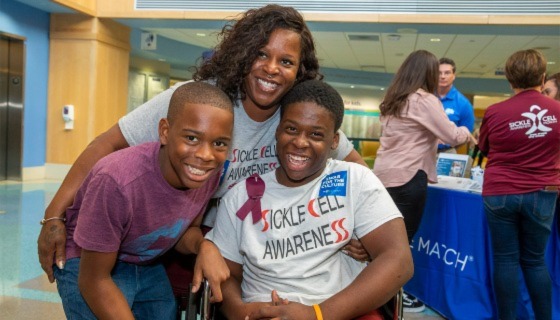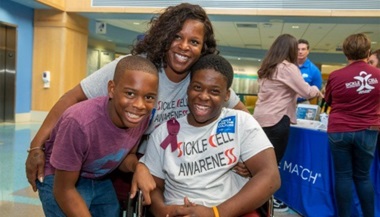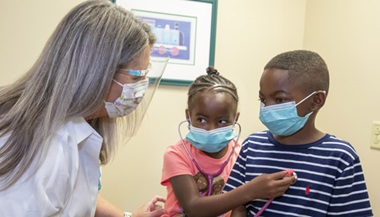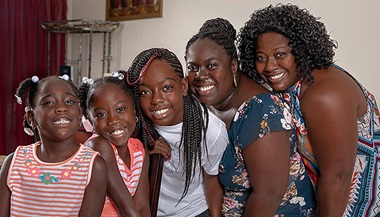Patient Story
Joao's Story: Sickle Cell Disease
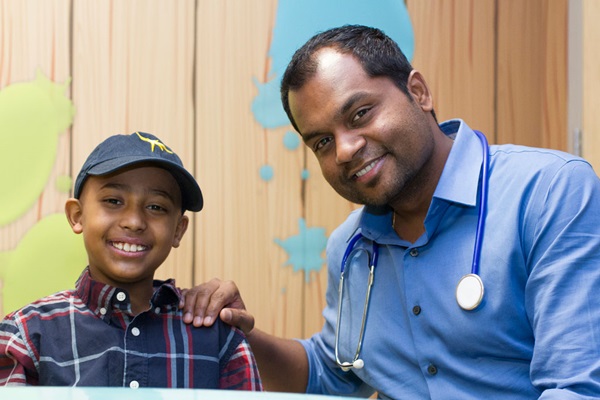
Patient Story Highlights
- Joao is a young boy who has sickle cell disease, an inherited condition that causes red blood cells to be produced incorrectly.
- After experiencing frequent painful crises and hospitalizations, he underwent a bone marrow transplant using stem cells from his brother Liam, who was a 100% match.
- Joao has now recovered and is living a normal, active life, playing baseball, enjoying school, and mentoring younger children in the hospital.
“The first thing I’m going to do is play baseball.”
Joao adjusted his Tampa Bay Rays ball cap while enthusiastically detailing the heroic catches he planned to make in the outfield when he was feeling better. With a glove ready to go, it was almost time for him to take the field. Almost.
But the high-spirited boy had to take some detours. He was visiting Johns Hopkins All Children’s Hospital several times a week where he received treatment for sickle cell disease.
“When I was five months pregnant, I learned that my husband and I are carriers for the sickle cell trait. There was a 25 percent chance he would have the disease,” explains Judy, Joao’s mother. Joao officially received the diagnosis soon after birth, during a routine screening.
Sickle cell disease is an inherited condition that causes the body to produce red blood cells incorrectly. Normal red blood cells are flexible and disc-shaped, allowing oxygen to travel throughout the body. Blood cells affected by the sickle cell trait become hard and crescent-shaped. The altered shape makes it difficult for the cells to move through small blood vessels, resulting in blockages that restrict the flow of oxygen and cause episodes of painful swelling, known as a crisis.
Joao was only 6 months old when he experienced his first sickle cell crisis. Many parts of the body can be affected by a crisis, from hands and feet to internal organs. As Joao’s crises continued it was eventually determined that his spleen was the culprit, and it was monitored closely over the following months to avoid rupture.
Looking for a better solution to treat the disease, Joao and his family met with the blood and marrow transplant team at Johns Hopkins All Children’s Hospital in 2011. The hope was a transplant would eliminate his numerous crises. To their disappointment, the timing wasn’t right.
Months prior, Joao had undergone a splenectomy and started taking hydroxyurea, a common medication for sickle cell. At that point, a blood or marrow transplant was not the best course of action. Joao and his family had to hope for the best and, for the next few years, the situation was somewhat manageable. The crises were not as severe and hospital visits decreased to every four to six months.
Eventually, things took a turn. The pain started to worsen and hospitalization became more frequent. He was having a crisis requiring hospitalization every two to three months.
“It was unmanageable for Joao, even on the hydroxyurea,” Judy recalls. “It was time to look at bone marrow transplant again.”
In November 2016, the family once again met with the blood and marrow transplant team at Johns Hopkins All Children’s Hospital. This time there was good news. He was a candidate for transplant. With this, Jessica Wishnew, M.D., a hematologist-oncologist specializing in sickle cell disease, along with hematologists-oncologists Benjamin Oshrine, M.D., and Deepakbabu Chellapandian, M.D., became the team caring for Joao.
The next step in the journey required his parents, and his siblings, Liam and Kaitlyn, to be tested to determine if anyone was a donor match. The simple blood test known as human leukocyte antigen (HLA) tissue typing identifies antigens, the proteins that help the body identify things that don’t belong such as viruses and bacteria. The closer the match, the less chance of transplant rejection.
Without a doubt, it had been a rollercoaster of emotions for Joao and his family and it had brought everyone closer together in many ways – perhaps none more so than Joao and Liam.
The HLA typing identified Liam as a 100 percent match to Joao. The chance of having a sibling that is a partial match is around 50 percent. For a full match the odds drop to 25 percent. To have an exact match for Joao was exciting and also scary, but most of all, a sense of relief.
After months of preparation, Joao received the transplant. During the procedure, he received stem cells collected from Liam that would start to produce normal red blood cells once they settled in Joao’s system.
Joao received clearance in March of 2018 to remove the mask that protected him from getting sick while his body adjusted to the transplant. He enrolled in camp, and while not on a team at that point, his parents began to take him to the baseball field across the street for practice.
Just because Joao was born with sickle cell disease, doesn’t mean he’s different from any other kid. He may need to go to the doctor more and get a little more attention, but he’s full of energy like a growing boy should be.
The future looks even brighter. Joao, now 11-years-old, is more active than ever. He is playing lots of baseball, enjoying math in school, his favorite subject, and even mentoring younger kids who are hospitalized.
Joao loves to read, too. Especially books about – you guessed it – baseball.



